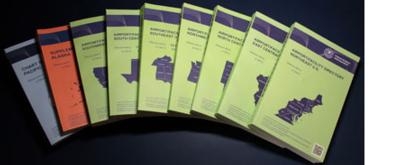Thu, Jun 06, 2019
Will Include Telephone Numbers Directly To The ATC Controlling Agency For Clearances To Depart Non-Towered Airports For the First Time
The June 20th 2019 publication of the FAA Chart Supplement (formerly known as the Airport Facility Directory or the “Green Book”) will complete a welcome change – publication of telephone numbers directly to the ATC controlling agency for clearances to depart non-towered airports or those with limited tower hours that do not have a Remote Communication Outlet (RCO) or Ground Communications Outlet (GCO).

Departing IFR when the weather is decidedly IMC at a non-towered location has always been awkward in in the past. The PIC could call the FSS (or sometimes a nearby ATC tower) and coordinate a departure time / runway / altitude / heading. This then required the PIC to make the slot time or start all over again. Mobile phones vastly improved the process permitting the call from the cockpit when ready to depart. Still, the infrastructure was not the best and sometimes long delays to relay to ATC and back kept the aircraft idling at the hold line burning needed fuel. The other option was to depart VFR in clear weather below the clouds, often at very low altitude and perhaps questionable visibility, and pick up the IFR clearance inflight. Unfortunately, there have been many tragic accidents stemming from this practice.
An effort was sponsored by the Texas Aviation Association and the Texas DOT Aviation Division some years ago to get direct telephone numbers published just for this purpose. Unfortunately, the FAA communications structure at the time was changing and apparently could not support the change then; however, the seed was planted.
In the communication paragraph listed for each airport entry in the Chart Supplement an ATC agency and telephone number will be given. As an example, see the 25 April 2019 Chart Supplement entry for Fort Worth Spinks (KFWS) –
“CLEARANCE DELIVERY PHONE - For CD when ATCT is clsd ctc Regional Approach at 972-615-2799”
Note this is for clearance only. File or modify the flight plan electronically or through FSS. Be ready to go when you call; ATC may offer an immediate departure if the airspace is congested and a hole is available. And, comply with the heading / altitude / frequency / squawk clearance issued.
While on the topic of speaking to ATC, the FAA is in the process of conducting a second test for remotely staffed control towers. Leesburg VA (near Dulles in DC) is currently running a test funded by SAAB and the airport authority. The second test will be in Loveland, CO (KFNL) starting this summer. The concept is to have a remotely controlled tower on the airport with the controllers at another location. Although this sounds impractical, testing shows it works well and the cost to build and operate a remote tower is much less permitting more smaller airports with a need for a tower to be able to meet their initial funding requirement for such.
(Article by Bill Dunn originally published by the Texas Aviation Association. Gunn is the former Director for Systems and Training for the Texas Department of Transportation, Aviation Division. FAA image)
More News
He Attempted To Restart The Engine Three Times. On The Third Restart Attempt, He Noticed That Flames Were Coming Out From The Right Wing Near The Fuel Cap Analysis: The pilot repor>[...]
Make Sure You NEVER Miss A New Story From Aero-News Network Do you ever feel like you never see posts from a certain person or page on Facebook or Instagram? Here’s how you c>[...]
From 2009 (YouTube Edition): Leading Air Show Performers Give Their Best Advice for Newcomers On December 6th through December 9th, the Paris Las Vegas Hotel hosted over 1,500 air >[...]
Aero Linx: NASA ASRS ASRS captures confidential reports, analyzes the resulting aviation safety data, and disseminates vital information to the aviation community. The ASRS is an i>[...]
“For our inaugural Pylon Racing Seminar in Roswell, we were thrilled to certify 60 pilots across our six closed-course pylon race classes. Not only did this year’s PRS >[...]
 NTSB Final Report: Rutan Long-EZ
NTSB Final Report: Rutan Long-EZ ANN FAQ: Turn On Post Notifications
ANN FAQ: Turn On Post Notifications Classic Aero-TV: ICAS Perspectives - Advice for New Air Show Performers
Classic Aero-TV: ICAS Perspectives - Advice for New Air Show Performers ANN's Daily Aero-Linx (06.28.25)
ANN's Daily Aero-Linx (06.28.25) Aero-News: Quote of the Day (06.28.25)
Aero-News: Quote of the Day (06.28.25)



